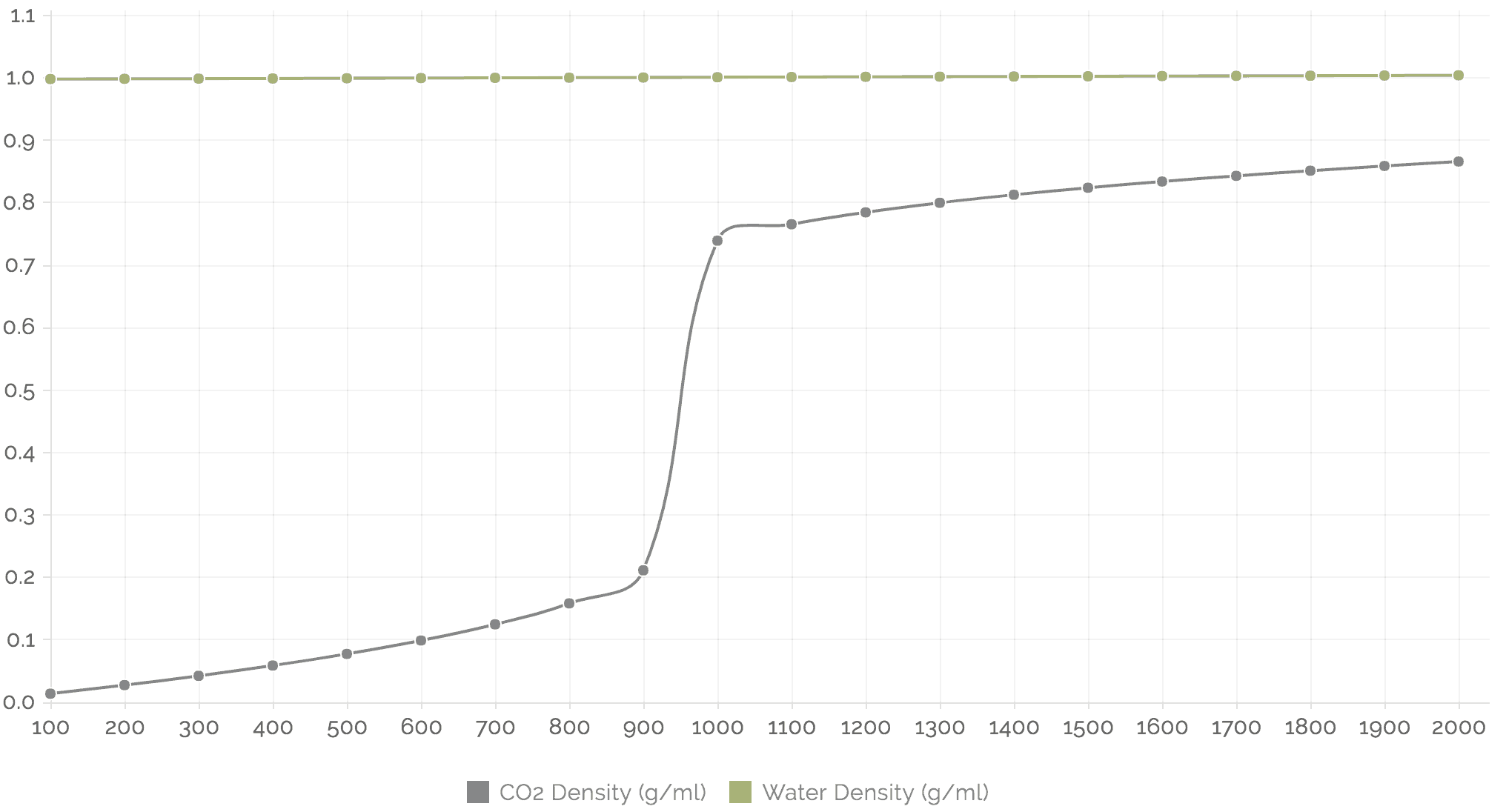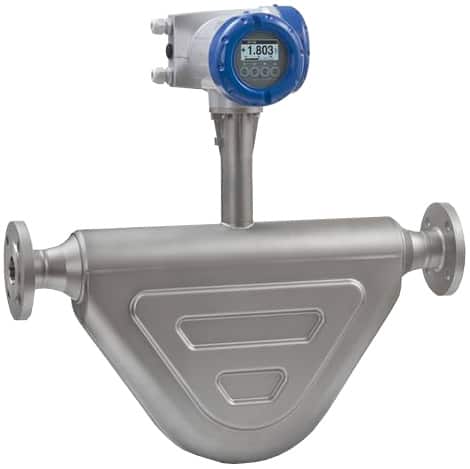
Comparing CO2 Extraction Pumps
Guest Post by Jeremy Diehl, Co-founder and Lead Engineer at Green Mill Supercritical
The heart of any extraction machine is its pump. Sadly, comparing the pump performance of different extraction systems is fraught with confusion and ambiguity.
A lot of systems state their pumps’ flow rates in volumetric terms, but because of the dynamic properties of CO2 density, this can be deceiving. Additionally, different types of pumping systems handle CO2 differently, with some capable of providing real feedback on flow while others are not. Some pump gaseous CO2, while others pump liquid.
The thread connecting these variables is density. As the chart below illustrates, the density of CO2 varies dramatically based on temperature and pressure, unlike that of water, for example:
CO2 & Water Density vs PSI (at 25°C)

This density instability means that it varies while it’s still in the tank, it varies through the phase change (when it goes from gas to liquid), and continues to vary while climbing to operating pressure and temperature. This matters because CO2 density impacts the throughput of the system. If you’re not controlling for density, your actual CO2 flow is fluctuating in ways you cannot see — you’re working blind.
Density is the amount of mass per unit volume. A density of 1gm/mL will mean that for every milliliter of volume, there will be 1 gram of CO2 contained. In the chart above, which considers a constant temperature of 25C (isothermal), you can observe a dramatic increase in density at 900 psi (when CO2 turns to liquid). But even in the 100-900 range, and the 1,000-2,000 range, those gentler slopes represent meaningful shifts in the density of CO2, and have a direct impact on how much CO2 you’re flowing at any given time.
At 1,000 psi, the CO2 density will be 0.7382gm/mL, but if you increase the pressure to 2,000 psi, the density will now be 0.8650gm/mL. This is an almost 20% increase in the amount of mass that is contained in a set volume, which correlates directly to flow rate and increased throughput.
Rating a system’s flow rate in terms of mass flow is the only true way to describe how much CO2 you’re flowing, which leads to a more meaningful measure of throughput. The only way to know how much mass of CO2 you’re flowing is to incorporate a flow meter into your pumping system.
Pumps are commonly rated according to volume because in most other industries and applications the medium being flowed is liquid (often water, for example) and has a mostly constant density under standard operating conditions. But this is not the case with carbon dioxide. Mass flow is what all operators are working with, whether they are aware of it or not. And being aware of it means the ability to produce more precise, repeatable, and efficient runs.
In the market, there are generally two types of pumping systems: Compressor pumps that flow gaseous CO2, and liquid displacement pumps that flow liquid CO2. Gaseous CO2 systems might be easier to design and build, but suffer from the density instability discussed above and rate their flow volumetrically. Pumping high density liquid CO2 might be more difficult to design and engineer, with its need for temperature management, but it is superior for consistent throughput and efficient use of energy. And of course, you can rate these machines’ flows based on mass instead of volume.
But pumping liquid-state CO2, while superior to gas, is not enough to optimize throughput. Even some liquid displacement systems that measure flow in mass can suffer critical fluctuations in density if they do not maintain liquid CO2 conditions while pumping (cooling the CO2 throughout the run is a reliable method).
Astonishingly, most liquid displacement pumps aren’t designed for flowing CO2 and have over-sized pistons with no thermal management attributes. If the CO2 is not kept cold enough, the pump may cavitate, flashing CO2 back to gas during pumping. This is serious. It can create a choppy flow profile, channeling, system instabilities, and significantly reduced flow.
The ability to precisely measure CO2 flow should be a minimum requirement for a modern extraction system. And yet, most extraction systems on the market today include none. How then do you know that their claims about flow are accurate? It’s a good question, and one you should ask them when shopping. It’s risky to build into your system the ability to show users certain information that you’re making claims about. Maybe it won’t perform the way you said it would.

A coriolis flow meter, a device that uses density to measure mass flow, is the only way to give accurate feedback for potential buyers to gauge throughput. Just as importantly, this is the only way to provide the operator with real data about the performance of the system they are using to initiate so many of the most valuable product pipelines in today’s cannabis extract industry.
In summary, the key things to consider about a pumping system when purchasing an extraction machine are:
- Does it pump gas or liquid?
- How does it specify flow (mL or grams)?
- Does it have a mass flow meter?
- Can it manage temperatures to ensure CO2 remains in liquid state throughout the run?
CO2 density is a difficult thing to manage and measure. To make the most informed decision, the pumping system of your extraction machine deserves your toughest scrutiny.
 About the author:
About the author:
Jeremy Diehl is an engineer with 13 years experience designing CO2 systems and instrumentation, and is co-founder and lead engineer at Green Mill Supercritical.
Are you a cannabis industry thought leader and want to be heard? Let us know your story.
